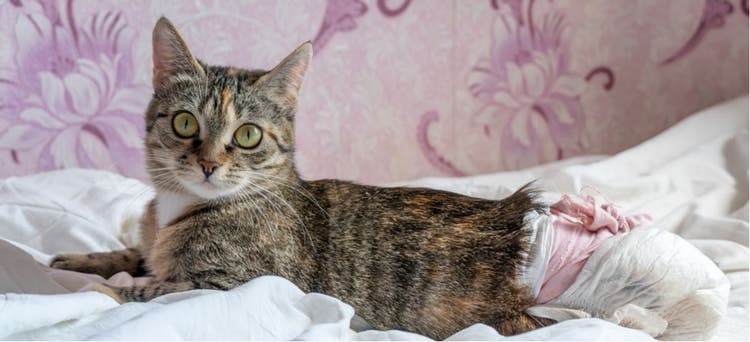
Slipped Capital Femoral Epiphysis & Femoral Head Surgery (FHO) in Cats
Hip problems are common in young cats, and there are a variety of reasons why your cat might be limping or lame on their hind legs. Hip joints are considered a ball and socket joint, with the socket attached to the pelvis, and the “ball” part (femoral head) located at the top of the femur (thigh bone). Dogs and cats can develop a disease that causes the femoral head’s growth plate to slip and become displaced. This disease is known by many names including: slipped capital femoral epiphysis, femoral neck metaphyseal osteopathy, spontaneous femoral capital physeal fracture, and femoral capital physeal dysplasia syndrome.
The exact cause of the growth plate displacement is unknown, but thought to be genetically linked. It may be a localized cartilage abnormality that results in delayed closure of the growth plate. This injury is non-traumatic and happens spontaneously. Cats that have a genetic predisposition to this disease should not be used in a breeding program, as a genetic component is suspected.
This condition is seen more often in cats than dogs. It’s most common in animals under 2 years of age, with overweight, neutered males being predisposed. In recent studies, Maine Coon and Siamese cats are overrepresented. Approximately 50-90% of cats with one leg affected will develop this bilaterally. A similar disease has been documented in humans, pigs, and Shetland Sheepdogs.
Symptoms of Femoral Epiphysis
Clinical signs include:
- Decreased activity
- Reluctance to jump on/off objects
- Lameness
- Pain
- Hiding
As the disease progresses, pain and discomfort levels will worsen. Often, animals will be reluctant to walk or put weight on the affected legs.
Diagnosis of disease is based on physical examination, medical history, and radiographs of the affected legs. Radiographs show displacement and widening of the capital growth plate.
FHO Surgery
Initial management of this disease is pain control and optimizing comfort. The recommended treatment is either a surgery called femoral head ostectomy (FHO) or total hip replacement. Treating without surgery will result in severe chronic arthritis in the hip joint and decreased activity and range of motion of the affected leg. FHO surgery is a straightforward procedure, where the femoral head is removed at the neck and the hip joint is recreated with muscle tissue. This is the most common treatment of the disease. Aggressive and early physical therapy is recommended to maximize the mobility of the joint. Long-term prognosis after surgical repair is excellent.